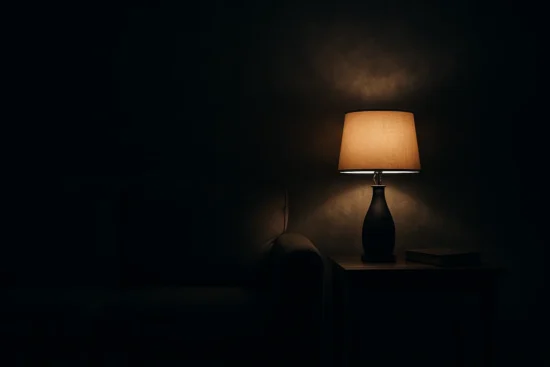How to Create a Dark, Moody Ambience Through Lighting

Lighting is far more than a functional element; it is an emotional tool that shapes how we experience space. In interiors where the goal is to evoke a brooding, intimate mood, the right lighting can create dramatic visual depth, a quiet tension, and a deliberate sense of calm. It’s about harnessing the poetry of shadows, the softness of indirect glows, and the atmosphere of intentional darkness.
Whether in a living room, bedroom, or quiet reading nook, mood lighting offers a powerful opportunity to personalize your interior with expressive nuance. Here’s how to thoughtfully craft that dark, moody atmosphere at home.
The Power of Indirect Lighting
To create a dark, moody atmosphere, there needs to be a shift in the way light is used. Rather than relying on harsh overhead lighting, an emphasis on indirect lighting helps create a multidimensional effect. Using lights and fixtures with a lower luminance creates a rich and immersive atmosphere.
This approach enhances the space’s moodiness by maintaining a controlled sense of subdued darkness. Table lamps placed at lower heights, wall sconces that graze the surface of a texture, and hidden lights that wash a corner rather than expose it are elements that quietly anchor the visual tone of a room.
Practical Ways to Get It Right
Layering is essential. A thoughtful mix of lighting types—table lamps, wall fixtures, floor lamps, and pendant lights—creates depth and variation in intensity, allowing the space to evolve with mood and function.
Opt for warm-toned light sources, ideally between 1800K and 2700K, to support the brooding character of the room. These warmer colour temperatures echo natural dusk and candlelight, offering a golden softness instead of stark whiteness.
Use dimmers or adjustable brightness features wherever possible to fine-tune the ambience throughout the day. Focus lighting on select areas rather than flooding the room, allowing shadows to deepen and contrast to emerge. This interplay between light and dark brings a cinematic quality to everyday living.
The Do’s and Don’ts of Moody Lighting
Do:
- Maintain visual harmony by ensuring light sources share a consistent colour temperature and intensity.
- Use indirect lighting to create soft pools of illumination, allowing walls and ceilings to fall into shadow.
- Incorporate smart lighting systems to allow for customization across time, activity, and mood.
Don’t:
- Avoid overusing ceiling-mounted lights, as they can flatten the atmosphere and reduce contrast.
- Refrain from excessive brightness, for a moody atmosphere, a gentle glow is more impactful than uniform lighting.
- Don’t mix inconsistent tones, as clashing colour temperatures can visually disrupt an otherwise cohesive space.
The Best Lighting Fixtures for a Brooding Interior
When designing a brooding, moody interior, the choice of lighting fixtures plays a pivotal role in shaping the atmosphere. Table lamps are ideal for creating warm, intimate zones, casting a soft glow that enhances specific areas without overwhelming the space. Floor lamps work well to anchor corners and introduce a sense of depth, while wall lights contribute to the interplay of light and shadow, highlighting textures and architectural features. Pitcher lights serve as subtle accents, drawing attention to objects or artworks with a refined touch.
Together, these fixtures help craft a layered, emotionally resonant environment that celebrates the beauty of restraint and the power of subdued illumination.
Designing with Shadow and Light
Beyond the fixtures themselves, it is the placement and orientation of light that truly shapes a space. Strategic lighting can highlight architectural features, create moments of visual pause, or dramatize a wall’s texture. The contrast between illuminated zones and shadowed recesses gives the space rhythm, depth, and personality.
Advanced lighting technologies, paired with carefully selected lamps, offer precision and control, allowing for refined, layered compositions that feel both tactile and cinematic.
To design with mood is to design with restraint. It is about understanding the impact of light, not only as a physical element, but also as an emotional force. A dark, brooding interior isn’t just about dimming the lights in the room, when in fact it is a deliberate curation within the space. It invites reflection, intimacy, and quietude. And it all begins with light.





